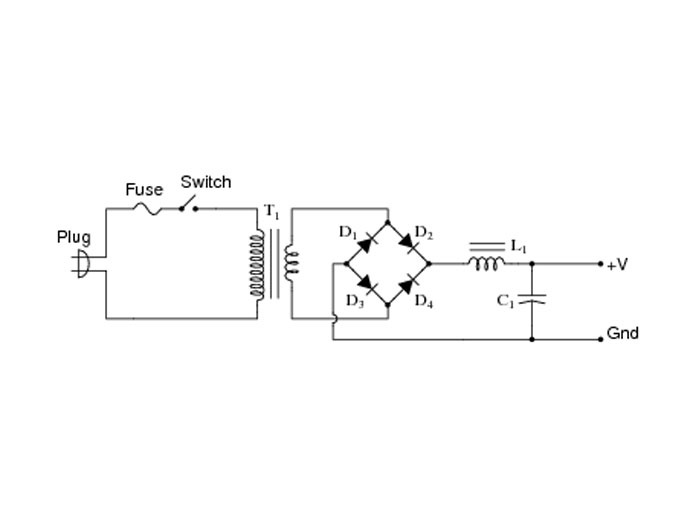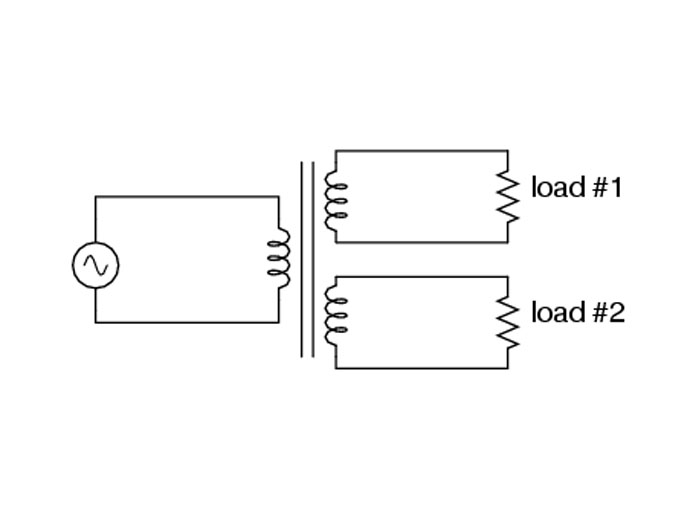What are Secondary Circuits?
Secondary circuits are those circuits supplied from transformer output windings that are electrically separated from the input windings.
A transformer is an electrical component that can be used to step up or down the input ac voltage signal. The basic transformer consists of a primary winding for the input signal and a secondary winding for the output. There is no direct electrical connection between the input and the output and the energy is transferred to the secondary winding through mutual induction.
The secondary output can be used for a variety of applications such as in power supplies where the secondary AC output voltage is rectified and then filtered to provide a DC power that can be used to power other electronic circuits. Secondary circuits are used in many power supply topologies and the frequency may differ from the 50 hertz for the normal regulator to several KHz for the switched mode supply. The components in the secondary circuit should therefore be able to handle the voltage, current and frequency of the signal at the transformer output. The circuit design and components is also dependent on the voltage regulation required at the output or the use of the output signal. Other factors that determine which components to use are the type of rectification, amount of ripple and noise, feedback, etc.
Some of the factors that determine the power in the secondary circuits are the impedance of the primary winding circuit, the components in the secondary circuit and the load. The secondary circuit load should be within the transformer rating to avoid overheating or inadequate power.
Figure 1 – Rectifier circuit on secondary winding
A transformer has two of more windings and can be used to either step up or down the input voltage. The ratio of the input to output voltage is dependent on the ratio of turns on the primary side to the secondary side turns. In most power supplies the step down transformers are used. These have either one secondary or multiple secondary windings depending on the required output. For power supplies with several output voltages, multiple windings are used. Each of the winding has its own circuit which may be similar or different depending on load requirements.
Figure 2 – Transformer with two isolated output voltages
The transformer operation depends on the secondary circuit and will draw very little current at no load conditions. Once a load is applied, the transformer draws more current from the mains corresponding to the load. If the load increases, the transformer draws more current and care should be taken to ensure that the transformer rating is not exceeded. Otherwise if excess current is drawn at the output, the primary circuit will continue drawing more current from the mains, of which it can even exceed its safe limit. As a result of the high current, the primary winding overheats and ends up damaging the insulation. A damaged insulation exposes the conductor which will short circuit and blow the transformer.
Secondary circuits derived from the secondary primary of a transformer have a variety of applications; in power supplies, audio circuits, oscillator circuits, etc. The transformer steps up or down the input signals to provide the desired signal level at the secondary winding. The output which can further be conditioned to produce the desired output. The secondary circuits are electrically isolated from the primary and probably dangerous input voltages. In addition, it is possible to have more than one secondary circuit either isolated from one another or connected together.
Advantages of secondary circuits
The advantages of using transformers in many electronic circuits are numerous. The transformers are flexible and ideal for isolating the low voltage equipment from the high mains voltage.
- Ability to provide different secondary voltage
- Multiple output voltages
- Signal or power isolation
- Safety from electric shocks and fire hazards

